When you travel in Japan, taking the train is a very common mode of transportation. While Japan’s train system is incredibly convenient and efficient, there are specific tarin etiquettes and customs to be observed. These train etiquettes not only help you better assimilate into the local culture but also ensure comfort and harmony among you and your fellow passengers. In the following, we will explore some etiquette points to keep in mind when riding trains in Japan. Adhering to these rules can make your train journey smoother and more enjoyable. Whether you are visiting Japan for the first time or are already familiar with the country, these train etiquettes will be beneficial to you.
Train Etiquettes Before Boarding
Don’t Linger Near the Ticket Gates

Upon entering the train station, before boarding, you will first pass through the ticket gates. Whether you’re using an IC card like Suica or ICOCA for your journey or purchasing a paper ticket, it’s essential to remember not to linger when passing through the ticket gates. Walk through, swipe your card if necessary, and promptly move on.
Especially when traveling with companions, even if you pass through the ticket gate first, please avoid waiting near the gate for your friends. Instead, walk a bit further away and wait in an area within the station where there are fewer people. This is to ensure there’s enough space for later passengers to pass through the ticket gates, particularly those in a hurry.
Japan Pocket Wifi Rental
UNLIMTED DATA SIM CARD
Japan Travel Prepaid SIM card
Queuing Up is Essential
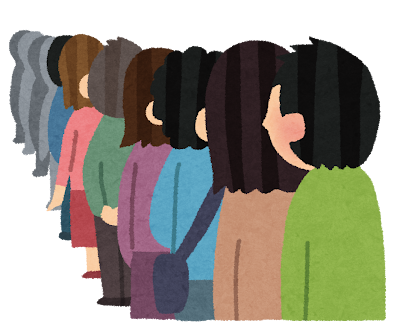
When riding trains in Japan, queuing up is one of the crucial train etiquettes. Japanese people highly value order and an organized environment, so when waiting at train stations, they automatically form queues to ensure a fair and orderly boarding process. This cultural practice allows passengers to enter train cars in an organized manner, preventing crowding and chaos.
Upon arriving at the station, you’ll see passengers already queuing up at designated spots on the platform. Please adhere to this order and join the line at the end. Avoid attempting to cut in line or push other passengers, as such behavior is considered impolite and unwelcome. Also, be mindful not to occupy other people’s waiting spaces, leaving enough room for other passengers to use.
Let Passengers Alight First

First-time visitors to Japan are often amazed by the scene at Japanese train platforms. Despite many people waiting for the train on the platform, when the train comes to a halt, nobody moves, and there’s no rush towards the train doors. Instead, passengers wait until those inside the train who need to alight have done so before entering the carriage.
This is a crucial etiquette principle when riding trains in Japan known as “Let Passengers Alight First.” This principle means that when the train comes to a stop and opens its doors, passengers should allow those inside the train to alight first before entering the carriage.
The purpose of this etiquette is to ensure that passengers can smoothly exit the train and move away from the door area, while also allowing other passengers ample space to board. Such an arrangement reduces congestion and confusion, enhancing the overall commuting experience.
Do Not Rush onto the Train When Doors Are Closing
In Japanese train stations, you’ll often come across signs like this:

When you arrive at the platform and notice the train doors closing slowly, do you opt to hurry into the carriage before they shut completely, or do you wait for the next train?
In Japan, trying to board a train while the doors are closing, known as “駆け込み乗車” (kakekomi-jyosha), is strongly discouraged. Although Japanese trains have doors that automatically reopen if they encounter an obstruction while closing, and the risk of injury is minimal, it’s still not a safe practice. In the worst-case scenario, if the doors were to close and the train starts moving with a passenger caught in between, the consequences could be severe. Even if the doors reopen automatically, it significantly delays the train and affects its punctuality, which is unfair to other passengers.
Therefore, if you notice the train doors closing, it’s best to refrain from attempting to rush onto the train. Instead, wait for the next train to arrive.
Train Etiquettes While on Board
Avoid Staying Near the Doors

Now that you’re inside the train carriage and all seats are taken, where’s the best spot to stand?
When traveling on trains in Japan, it’s important to avoid lingering near the doors as part of proper etiquette. Door areas serve as the primary points for passengers to enter and exit, so keeping these areas clear is essential for smooth movement. Therefore, if you’re already on the train, when the doors open at a station, try not to stand directly by the door and instead, move further into the carriage. If you’re about to board, once you’re inside, head towards the center of the carriage and hold onto a handrail for stability.
In cases where the train is crowded and standing near the doors is unavoidable, it’s advisable to briefly step off the train when it stops at a station to allow space for passengers inside who need to get off. This is a common practice observed on trains in Japan.
Maintain Silence
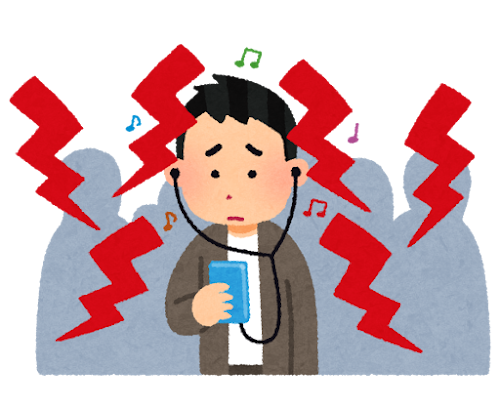
When riding trains in Japan, maintaining silence is crucial for proper train etiquette. Japanese culture places a strong emphasis on peace and order, particularly in public spaces like train carriages.
If you’re traveling with companions, it’s important to speak quietly or avoid engaging in loud conversations to respect fellow passengers. When communicating with your companions, try to keep your voice low to avoid disturbing others.
If you have a mobile phone, please switch it to silent or vibrate mode to prevent disruptive ringtones or notifications. Generally, answering phone calls is not permitted while onboard. If you need to make or receive a call, it’s best to disembark at the next station, conduct your call on the platform, and then reboard the train. If you must use your phone inside the carriage, please keep your voice soft and keep the conversation brief to minimize disruptions.
In addition to conversations and mobile phone use, playing music aloud or using audio devices without headphones is strongly discouraged. If you need to use headphones, ensure that the volume is at an appropriate level to prevent sound leakage.
Luggage Considerations

When carrying luggage onto the train, please make an effort to minimize space consumption. If you have large luggage, try to place it in the area designated for wheelchairs inside the carriage. However, you should not leave your luggage unattended while you find a seat. Instead, stay with your luggage and ensure that it remains stable. Be cautious not to block exits or hinder the movement of other passengers.
Please refrain from placing luggage on the seats. In Japanese train culture, maintaining the cleanliness of seats is crucial. Placing luggage on seats can obstruct other passengers from finding available seating, preventing them from sitting down. For small items like handbags, backpacks, and the like, you can stow them in the overhead luggage racks above the seats. These racks typically offer ample space for small luggage, making it convenient for you without inconveniencing other passengers during your train journey.
Avoid Taking Up Excessive Space When Seated
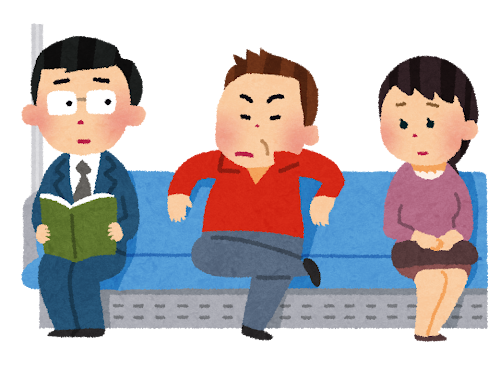
When seated, it’s essential to maintain a comfortable posture without occupying unnecessary space. Men should try to keep their knees together, avoiding spreading their legs too wide, which allows the adjacent seat to provide more space for other passengers. If someone is sitting next to you, refrain from crossing your legs in front of them to avoid causing inconvenience.
During the train journey, be mindful not to overly expand your body. Sometimes, passengers may unconsciously extend their arms or place their backpacks onto the adjacent seat, making it difficult for others to use that seat. Please be attentive to your posture and ensure that you do not encroach upon the neighboring seat’s space, as this could inconvenience others.
Avoid Eating Inside the Train
When traveling on trains in Japan, it is strictly prohibited to eat inside the train carriage. This rule is in line with the strong emphasis on cleanliness and etiquette in Japanese culture, especially in public transportation.
Please refrain from chewing gum while on the train. In Japan, chewing gum in public places is considered impolite and unhygienic.
Furthermore, avoid bringing foods with strong odors into the train. If you do bring food on board, ensure that it is well-packaged and does not emit strong smells. If you happen to get hungry while on the train, opt for odorless snacks like dried fruits or biscuits and try to remain quiet. Avoid consuming foods with strong flavors or those that require loud chewing.
Priority Seats
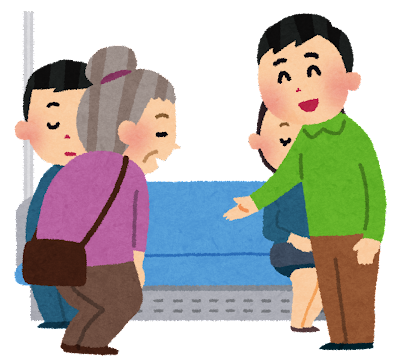
In some train carriages in Japan, there are designated “priority seats” that are reserved for passengers in need. These seats are typically marked with special symbols, such as baby stroller or wheelchair icons, and are prioritized for use by pregnant women, the elderly, individuals with limited mobility, or families with young children. As courteous passengers, it is important that we avoid occupying these seats to ensure that passengers in need can use them comfortably.
Mobile phones are wireless devices that emit and receive radio signals, which can generate electromagnetic waves. While the electromagnetic radiation emitted by mobile phones is generally low, in specific environments, it may interfere with sensitive devices. In Japan, some train operators have regulations prohibiting the use of mobile phones near priority seats. This is primarily done to prevent electromagnetic interference with sensitive equipment, such as medical devices, hearing aids, pacemakers, and more.
Train Etiquettes in Summary
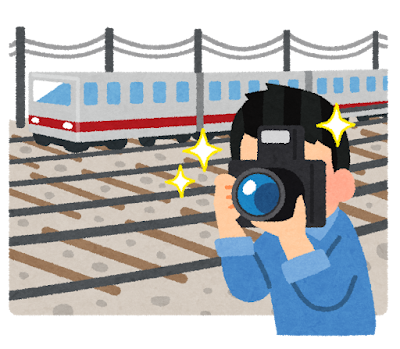
In Japan, adhering to proper train etiquette is highly valued. It not only shows respect for others and society but also is an essential part of integrating into the local culture. Following train etiquettes helps create a comfortable traveling environment and makes us considerate travelers. Of course, the train etiquettes mentioned here is just a part of it. When riding trains, the most important thing is to stay attentive and respectful of others’ needs.
If you are traveling to Japan, observing these train etiquettes guidelines will help you have a pleasant experience with Japan’s transportation culture and harmonious interactions with locals. At the same time, appreciate the convenience and efficiency of Japan’s trains and experience the unique charm of this beautiful country.
Finally, I wish you a pleasant and smooth journey on Japan’s trains, filled with wonderful memories and experiences to take home.
You may find the following articles helpful
Japan Pocket Wifi Rental
UNLIMTED DATA SIM CARD
Japan Travel Prepaid SIM card
